Improving Memory Through Proper Exposure to Light with Dan Pardi
Dr. Michael Ruscio is a DC, Naturopathic Practitioner, researcher, and clinician. He serves as an Adjunct Professor at the University of Bridgeport and has published numerous papers in scientific journals as well as the book Healthy Gut, Healthy You. He also founded the Ruscio Institute of Functional Health, where he helps patients with a wide range of GI conditions and serves as the Head of Research.New scientific findings show that natural light, and light bulbs which closely mimic natural light, are closely tied to optimal memory formation. Light anchors the timing of our circadian rhythms, impacting sleep. The better you sleep, the better you encode memory. Indoor light bulbs which have less natural tones and brightness can have a detrimental effect on memory. Even if you optimize your indoor conditions, it’s important to get outside regularly. Technology that pulses light shows promise if you’re a jet-lagged traveler, shift worker, or someone who stays out late on weekends.
Dr. R’s Fast Facts Summary
How does light impact memory?
- Light effects circadian rhythms and impacts memory
- Light has a direct input into how alert we are
How to increase light exposure
- Get outside at least a ½ hr every day
- Try to have your indoor space reflect the light outside
- Use full spectrum lights 5,000-6,000 kelvin to replicate sunlight
Does the type of light versus brightness dictate response?
- Yes
- Brightness is relative
- Light intensity actually affects our wellbeing
- Lux is a measurement of light intensity
- Many people have indoor light measuring 200-1000 lux
- 1,000 Kelvin is very amber light, think of fire
- Outdoor light on a clear day can measure up to 100,000 lux. Much more than we can even perceive.
- This is why outdoor time is recommended
- Many people have indoor light measuring 200-1000 lux
LED lights
- Can provide full spectrum light
- May have EMF exposure implications
Jet Lag
- Can be mitigated through pulsed light
- LumosTech is a new device that can help correct jet lag
Where to learn more
- Dan Pardi’s website
- Podcast and Blog
In This Episode
Episode Intro … 00:40
How Light Can Impact Memory … 4:00
How To Increase Light Exposure … 10:00
Types Of Light And Effects On Sleep … 13:00
Why You Should Go Outside Daily … 16:00
Best Light Bulbs for Health … 18:40
EMFs and Your Lighting … 23:45
A Device To Help Jet Lag and Shift Work … 32:00
Episode Wrap-Up … 49:16
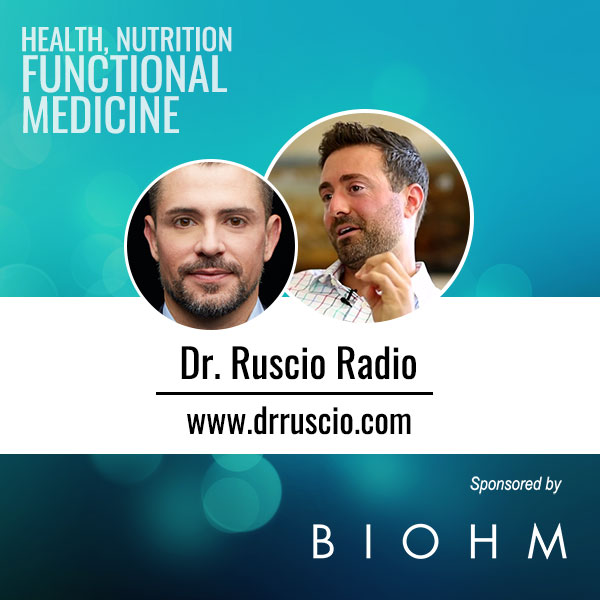
Download this Episode (right click link and ‘Save As’)
Episode Intro
Dr. Michael Ruscio, DC: Hey everyone, welcome to Dr. Ruscio Radio. This is Dr. Ruscio. Today I am here with Dan Pardi who is just about to be on the other side of his PhD, which is really exciting. So Dan, welcome to the show and thanks for taking the time this close to defense.
Dan Pardi: Hello Mike. Thanks for having me on. It’s a pleasure to be here. It’s been a long haul, and very enriching and rewarding. I’d like to keep a foot in academia as I continue to do what I do once I graduate. My plan isn’t to be an academic, but I like the sharpness of thought that doing research confers. So it’s been a great experience. Nice to be here with you today.
DrMR: I agree with you. This is something I’ve talked about a number of times in the podcast: I enjoy all the conversations that I have, but there tends to be another degree of clarity when you have a conversation with someone who is both involved in academics and the clinical setting. And I do think it helps you. It keeps you sharp. In the clinic, you can get a little bit complacent with what’s right in front of you and not be aware of the evolving body of literature. And you can also get wrapped up in false associations. And that’s where I think the rigor of academics not only keeps you abreast of new developments, but also helps you analyze things that you’re seeing in a more accurate frame. So I think it’s a great mix to have both the clinical and the academic.
DP: Don’t remember who said this quote: “The most dangerous words in the English language are, ‘In my clinical experience…’”
DrMR: Thank you. Yes, I would agree with that to an extent. I do think sometimes, with all due respect, it can be used as a cop-out. I do think sometimes people hide behind that. So I appreciate that quote.
DP: Yeah, I don’t fully agree with it. I get the intention though.
That is definitely somebody who is an evidence-based person. But I actually have a little bit of an issue with relying entirely on evidence-based medicine too, because there are so many questions that have yet to be asked in a specific way to help the individual in front of you. So the fact that you have a foot in both camps lets you do what I call the art of healthcare. That’s where you hopefully can align different magisterium or positions that help make a better decision for that person and help them be in a better place.
DrMR: Fully agreed. And I’ve described this as being evidence-based but not evidence-limited.
Because there are some things that we have yet to answer. So we have to think outside the box and be a little creative. By that same token, what I’ve noticed, especially in GI care, is sometimes there’s a lot of evidence giving you a pretty good model. And the evidence is just overlooked or cherry-picked. But in any case, I’ll get us off our soapbox here because I know you and me could go on for a while.
DP: Yeah, that would be an interesting conversation actually.
DrMR: Yeah, I think it very much would.
How Light Can Impact Memory
Now, I just want to make sure to touch on something, because I saw a post that Robb Wolf did on Facebook along the lines of, “Now my workspace is outside after this post from Dan Pardi.” It was about light and how light impacts memory. So I’ve been wanting to dig more into the details on this.
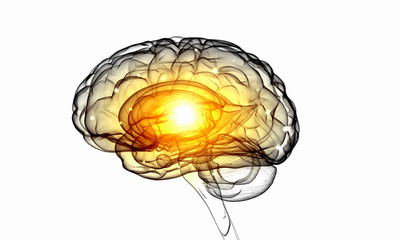
I think, for probably everyone listening, memory is going to be important. Perhaps your line of work doesn’t require a lot of intense memory work. That’s fine. You may want to remember important birthdays or dates or things on your shopping list… I can see no way in which having a good memory would be a negative experience. So I’m curious, what are the new findings regarding light and its impact on memory?
DP: We’ve known there’s been a connection between light and memory for a while, but we just didn’t understand what the underlying neural mechanisms were. And it’s really more than one mechanism. From one perspective, we definitely know that light having an effect on circadian rhythms, or body timing rhythms, will have a fundamentally important input into how well your memory functions. In fact, the genes that are involved in memory are highly evolutionarily conserved (so they are consistent across different species), and this is related to circadian rhythm. We’ve known that for a long time.
And memory, like you said, is really important. Even if you don’t feel like you have a memory-intensive line of work, you do. A good memory will enhance just about everything that you are trying to do, because it will require very little strain for you to conjure up a new idea.
Having good memories is certainly involved in creativity. Oftentimes creativity is the net result of having a lot of ideas circulating and then coming up with a new solution, new idea, new concept on top of that foundation.
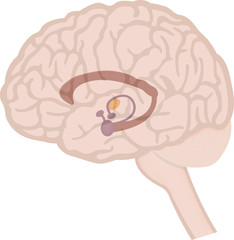
So we know that light will help to anchor the timing of our rhythms. And memory benefits from a well-timed circadian rhythm. We also know, however, that light has a direct input into how alert we are. Alertness is another modifying feature to having a good memory. If you’re feeling really, really tired on a certain day, your ability to form new memories is impaired. And a good sleep and a well-aligned circadian rhythm is going to have an impact on just about all aspects of the memory process, or the formation of new memories. So as you’re listening to my voice now, you are encoding those into the hippocampus, which is a seahorse-shaped structure within the brain.
At night when you sleep, you undergo a transfer process where those memories will go from the hippocampus into neocortical areas where they’ll integrate into neural networks. So that’s the first part. How well you slept last night is going to determine how well you encode today. How well you sleep tonight is going to determine how well you transfer those memories you learned into your neural networks. Then a month later, let’s say you did learn a few things. Right now, your ability to conjure up what you actually know is going to also be dependent on the sleep that you got in the preceding nights before this moment. So it affects all aspects, but the new science on this is pretty compelling.
I interviewed Professor Tony Nunez on my podcast. He is a professor at Michigan State University. He’s also a Florida state alum like I am. He took rodents and he put them under constant dim light conditions. He then studied how well they performed after being in those conditions for weeks at a time. How well did they perform on memory tests? And you can guess, they performed terribly. They could not remember, literally, if their life depended on it. There is something called a maze test, which is a reliable, validated test of memory. They just couldn’t remember anything.
When they sacrificed animals and looked into the neural structure, they found a 30 percent retraction of dendritic spines, which are the neurons reaching out to form new connections with other neurons. This is part of the plasticity process. That was very interesting work. They found that light itself, particularly the right intensity light, provides some hormetic or stressful signal that then keeps your hippocampus strong and connecting.
When you put animals (including us) into conditions that are unnatural… we have to think about this information, although it was in rodents. We now spend 90 percent of our time indoors. So we are not getting a very bright light signal like we once were, and that is likely having a pretty significant impact on our memories. I’ll mention one more thing to you. When Professor Nunez then took those mice that had that retraction in those dendritic spines and very poor memory, and he put them back into natural lighting conditions, their memory deficits reversed and they started to perform well again. So that was good to hear.
DrMR: Yeah. Encouraging.
Indoor and Outdoor Light: Memory Improvement Tips
Obviously people can get outside. I’m also thinking that a full spectrum light or a few different full spectrum lights can be helpful. What would you offer people in terms of specific actions they can take, or goals they can strive for, to try to make sure they’re getting the right amount of light to improve their cognitive function?
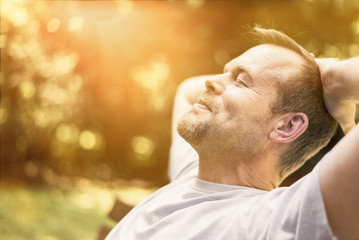
DP: Like with many studies, you’ll first want to test the capacity of the system to induce an effect. What I mean by that is, you see that these mice were kept in 300 lux. Lux is a measurement of light intensity. 300 lux is pretty dim, but it’s not that dim. This is a lot of people’s indoor offices, probably between 200 to a thousand lux. Now, if you were to step outside at noon on a bluebird day with bright blue skies, the light intensity measured in lux is way, way stronger. Over 100,000 lux. So much more than we perceive, right? If you go from a dim space to a bright space, your eyes might be sensitive to that for a moment, but you can adjust very quickly.
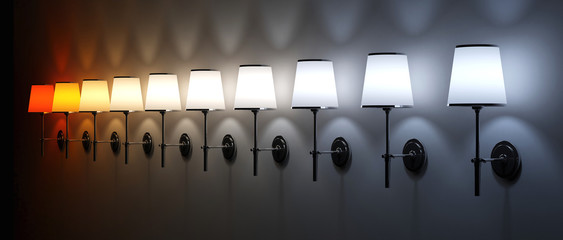
Think about it though as the amount of photons entering into the eye and giving your eye certain signals. Humans do spend most of their time in indoor spaces. Oftentimes they can be not well-lit. They could be too dim. The mice were in there for weeks at a time. Most humans get a little bit of light exposure outside every day. So is that enough? And the question becomes, how much do you actually need? In this sense, we don’t have specific information. But we do have information from other research studies on different areas. They indicate we should probably try and get outside at least a half an hour every day to get a good amount of light. I can’t say that specifically for this, but I bet that holds here too.
DrMR: Does the type of light versus the brightness of the light make an impact? One of the things I try to do is expose myself to full spectrum bulbs that have this very white type of light during the day, and then I typically use a soft yellow light bulb at night. Would you be disserved if you were getting a high amount of of brightness from a yellow bulb during the day? Is this something people should try to optimize for?
DP: Yeah, we’ll do a little house-cleaning on the terms brightness and light intensity. Brightness is the relative lumosity of an object in your peripheral space. What I mean by that is: think about holding up an iPhone in a very dark room with the phone on full brightness. That’s going to feel piercing, right? It’s going to be too bright for you to look at. However, the overall intensity of that device is not that great. You can barely see your screen if you go out on a full bright day and you’re looking at it. So brightness is how bright an object is depending on the environment that you’re in. Light intensity is the overall amount of photons that are coming into the eye.
Types of Light and Effects on Sleep
DrMR: So brightness is more like a relative measure than it is absolute?
DP: Yeah, that’s exactly right. I’ll just make a point here, but I’ll circle back to your question. Even though phones aren’t that bright, every time you half the distance of a light-emitting device to your face, you quadruple the exposure of photons getting into the eye. Because of how close we are holding devices to our face, particularly at certain times—imagine somebody laying in bed and looking at their iPhone—it can have an impact on things like circadian timing. So to go back, we do want to get enough intense light. What do I do? I do try to have my indoor spaces reflect what’s happening outside. That’s probably the key heuristic that you can utilize to guide what type of light to expose yourself to at a certain time of day.
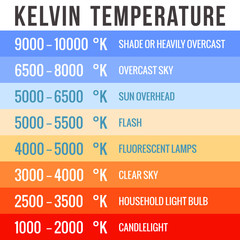
Tone or temperature is measured in Kelvin. So 1000 Kelvin is very amber light. That’s like fire. If you go up to about 5,000 to 6,000 Kelvin, that’s full spectrum white light. Beyond 7,000 Kelvin, the light tone will actually tend toward blue. It looks like blue light, but the important thing to note is that 5,000 to 6,000 Kelvin, even though it looks like full spectrum white light, it has a lot of blue spectrum in it. So to get a lot of blue light exposure—and I’ll explain why this is important in a moment—it doesn’t need to look blue, it just needs to be full spectrum.
In the morning when I’m turning on the lights in my office in space, I try to have them be closer to dawn. At 8:00 AM, I’m looking at somewhere around 40,000 Kelvin. By midday between 10:00 AM and 2:00 PM, I’m looking to emulate an outdoor lighting Kelvin tone, which is closer to about 5,000 to 6,000 Kelvin.
A little bit bluer, full spectrum white is a little harsher. It’s less warm, more blue. That can go a long way toward helping you get a good circadian signal that’s going to help with the circadian aspect. Now—whether or not that lighting helps with memory formation—I still think we need to get outside.
Even though you want to have smart light rhythms in your indoor spaces, you still want to get outside for at least some amount of time. I try to get outside for 10 minutes before noon and overall half an hour outside every day.
Why You Should Go Outside Daily
DrMR: Does it make a impact if it’s a cloudy day? I’m assuming the effect is somewhat attenuated, but would it still be a good idea to get outside?
DP: Yeah, you’re absolutely right. It is attenuated. But it’s still a good idea to get outside because it’s going to be somewhere around 50,000 to 70,000 lux. That’s again a lot brighter than a lot of our spaces that are indoors.
When you have a light box, that tends to be around 10,000 to 12,000 lux or light intensity. A light box is a commercial product. There are various types that people use to prevent SAD or seasonal affective disorder. If you’re at a latitude where it only becomes light at maybe 10:00 AM and the sun goes down by 4:00 PM or earlier, you might be driving to work and inside all day. It’s dark when you leave and it’s dark when you get out.

So you’re basically only exposed to an indoor lighting environment. That’s not quite enough for a lot of people and they’ll have a shift of their circadian rhythms. That shifting, we know now, is important for depressive symptoms and mood and affect. So I’m switching here between physiological effects of light on our physiology and then light on our circadian rhythms. Overall what we care about is being healthy and having good mood, good reaction time, good memory.
But this newer finding from the Nunez lab looks like there’s a direct physiological consequence of bright, intense light being outside. So I’m fortunate enough that where I work, my office is a two-car garage. Even though I’m inside, if I have a phone call, many times a day I’m just stepping outside for a couple minutes of sunshine. That’s ideal if you can do that in the context of the reality of modern life, right? I mean, you can’t just live outside. That’s hard.
Sponsored Resources
Hey everyone, I’d like to tell you about BIOHM, who helped to make this podcast possible. Now, BIOHM offers a line of gut-healing products, including a probiotic, a prebiotic, and a greens powder. Now, their probiotic is interesting in the sense that it combines strains from both category 1 and category 2.
So from category 1, you have lactobacillus, acidophilus, lactobacillus rhamnosus, and Bifidobacterium breve. And from category 2, you have S. boulardii, so a nice combination of category 1 and category 2.
And if you go over to BIOHMHealth.com/Ruscio and use the code RUSCIO at checkout, you’ll get 15% off your first order. So BIOHM, they’ve got a good line of probiotic and prebiotic and the greens powder, all to help you improve your gut health, which we know has such massive and far-reaching impacts. So check them out over at BIOHMHealth.com/Ruscio.
Best Light Bulbs for Health
DrMR: Right. Now, let’s say someone has an office, they’re trying to optimize that office. They can buy a light box and get the standard dose that you said is 10 or 12 minutes. But—please correct me if I’m wrong— they could also buy two or three full spectrum light bulbs and have those in the lamps in their office. Would you say one has more merit than the other?
DP: Yeah. I’m excited about where we are moving to. With smart homes, we now have the power to have our lighting environment adjusted for us. So that is more propitious to our physiology. If you don’t mind, I’ll just do a quick light history for you. Our hunter-gatherer ancestors were exposed to light in the forms of the fire, moon, stars, and the sun.

This is some work from Gandhi Yetish and Jerome Siegel from UCLA. When they looked at hunter-gatherers in Africa—at least for this group of people—their peak light exposure was between the hours of nine and noon. Then at that point they would seek shade to get out of the intensity of midday. And then, after being out of town for a couple of hours, they would go continue their daily chores and work. When the sun went down, they didn’t go to sleep right away. They stayed up for two to four hours after sundown. There they were exposed to fire and whatever the lunar fluctuations were. So there was some light exposure after darkness for sure. But if you think about the tone of fire, the Kelvin of fire, the temperature, it doesn’t tell your brain that it’s daytime when it’s night.
The basic human exposure to light remained constant all the way up until 1879 when Thomas Edison patented the incandescent light bulb. And if you think about incandescent light, it gives off a very warm tone of light. You can easily dim those bulbs. That’s good, in the sense that if you’re going to have an artificial light on in the evening, the tone and type of light you’re getting will be less disruptive to your circadian timing.
It’s not good when you live inside all day long because you’re just not getting that bright of a signal. Now, the problem with incandescent lights is they’re very energy inefficient. That has rightfully worried policymakers about their contributions to global warming.
This has led to the generation of different types of light bulbs, including compact fluorescents, which everybody hates because they can’t be dimmed. They give off a very strange signature of light. Only certain blues, and greens, and oranges are represented, and they flicker. If you’re under fluorescent lights all day, it just looks harsh. It gives people eye strain and fatigue and headaches commonly.

Then in 1992, the Japanese invented LEDs, or Light-Emitting Diodes. This is a really important part of our discussion about light overall. For the first time ever from an electric light, LEDs could represent full-spectrum white light. Before that we didn’t have that full spectrum of light. And not only do we put these in our homes, we have them in our screens: TVs, smartphones, etcetera. Yes, we’ve had artificial light for over 100 years, but the light has changed. And with it we can have a more powerfully negative impact on our health. But we can also have a more powerfully positive impact on our health with the right information, because LEDs can change their tone.
Like you said, you can put in blue-enriched white light in your office during the day and you won’t need a light box. You’re going to get really good strong signal. And there is evidence that that will have a powerful effect on anchoring our circadian rhythms. As I mentioned before, I don’t know that we know everything about whether that is perfectly adequate for all of our physiological needs of light. I still think we need to get outside, but I think we can do a lot better that way.
DrMR: Sure. So if you could use a light in your office—that was, let’s say, yellow for simplicity—and then just get one 12-minute burst from a light box, or you could change the lights in your office to white light for the entire day, I would assume that would be found to be more effective if we had the evidence to support it.
EMFs and Your Lighting
What I typically like to recommend is try to stay as proximal to the natural way of things until proven otherwise. If we don’t have the data here, let’s lean in as closely as we can in the direction of what seems to replicate the natural application of light. One thing I did want to ask you about, a bit tangentially, is the EMF exposure from LED lights. I’ve heard some criticisms that LED lights give off high amounts of EMFs. I haven’t checked into this. I’ve heard it. Do you know anything about this?
DP: You know, I cannot comment on this from an informed place. So I need to do more work into this myself. With all forms of more powerful technology, there can be benefits and drawbacks simultaneously.
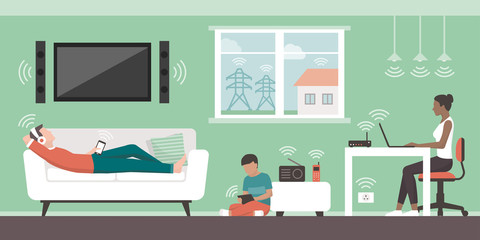
And I don’t know that we fully appreciate or understand the effects of EMF. For me it’s a bit frustrating because we’re awash in EMF in the way that we live. You go into any store, any office space, there’s just a lot of it. And it very well could prove in the future, it’s a slow acting effect that causes some pretty serious health issues.
There’s that saying, if you’re a hammer, the world is a nail. At the moment I’m focusing more on the impact of the light intensity and spectrum versus the externality of EMF on our physiology. But I have to say that I don’t know much about that.
DrMR: Fair enough. And I do have two LED lights I use at my house. I asked because I still don’t have a good answer on this question. I will say it was Dr. Mercola who was on, who felt pretty strongly. I believe this was also corroborated by Ben Greenfield. But I haven’t checked the evidence that they’re citing, which I like to do.
Both of them felt fairly strongly, at least to my recollection, that that LED lights did throw off quite a bit of EMFs. But I have two remote-controlled LED lights. The nice thing about them is, with this remote, I can go with the click of a button from a white-blue light to a nice soft yellow light. And dim it. But I guess we’ll have to report back at some point on the potential EMF exposure from those.
DP: Yeah. I’ll say this. Do you live currently in an EMF-free space? And if not, how much additional EMF would be contributed to the total amount? And what are the known benefits of modifying your light on your circadian system, which is very impactful on our health in so many ways?
DrMR: Right. Where’s the net direction going to take your net benefit or net detriment? Yeah, I think that’s a good point to look to.
DP: Yeah. If you’re trying to have an EMF-free living space, I would consider that. And if not, the total contribution of some EMF emitted from these bulbs might not make a significant impact on your total EMF exposure.
We do know that light does have an impact on our health. And so you’re trading off a maybe for a known. And like I said, I don’t want to comment on it more than that. But I think those are some good thoughts to consider if you’re thinking about the EMF versus just the light modulation.
DrMR: And then for consumers, you can easily buy either bulb, right? It’s not going to be a huge difference if you want to buy one yellow bulb and one blue bulb and just change those out, or one LED light.
Fortunately you’re looking at a $10 to $20 differential in the price. The LED adjustable light I have was, I think, $20. So that’s more than even your top-shelf full-spectrum light bulb, which I’m thinking is around $7 to $10. But shouldn’t be a huge decision either way.
A Device to Help Jet Lag and Shift Work
One thing that I did want to ask here, Dan, is about this device for mitigating jet lag. I don’t want to forget about this point as it ties into light and perhaps modulating your environmental light. And I saw this post you did recently, but I didn’t read it. What is this device and how would you recommend someone use it?
DP: Yeah, so this is actually a technology that my primary mentor Jamie Zeitzer worked on. He’s associate professor at Stanford, he did his PhD training in circadian biology under Chuck Czeisler at Harvard, who’s really the grandfather of circadian biology on our health, particularly related to sleep and body timing. And so Jamie’s got excellent credentials.
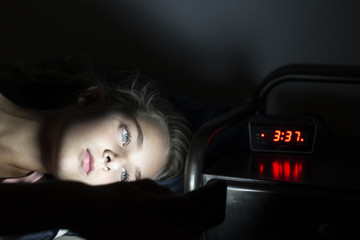
Anyway, the work that he’s done has looked at ways to affect our timing of our circadian system, our biological timing. I won’t go much into the technical because you can explain the concept without having to go any further. He’s found that light pulses are more powerful at shifting the timing of your circadian rhythm than continuous light. Let me give you a concrete example here.
What I’ve mentioned so far on the importance of light to circadian timing relates to intensity and tone. Another aspect is timing. So for example, if you get light late at night, that is going to pull the timing of your rhythms towards the light. Particularly if it’s the wrong type of light.
If you, let’s say, have full-spectrum LEDs on in your bedroom right before sleep, your brain is thinking, “Oh, okay, it’s daytime. Let me adjust the timing of my rhythms so that I think this is midday.” That throws us off in really powerful ways.
But the point here is that timing matters too. So you can have light go on early in the morning. There are actually light alarms: the light will turn on, say, at 4:00 AM, penetrate our translucent eyelids, and cause our circadian system to start to make adjustments. This is used for a variety of applications.
For one, it’s used with kids. Teenagers that have what’s called delayed sleep phase syndrome. Delayed sleep phase syndrome is where a young teenage person will have the tendency to want to stay up and go to bed later than they were just a few years before that. It’s actually thought that that is a kind of biologically conserved behavior from what’s called the sentinel hypothesis. The hypothesis is that was probably the first adult responsibility of young adults to stay up later and watch over the tribe.
DrMR: Interesting.
DP: Yeah. We experience it these days as annoyance, as the teenagers up late chatting with all their friends who are also the same age and are also up, right? So the parents are like, “Go to bed!” Now, they’re growing children so they still need nine hours of time in bed, but then school times start at let’s say 8:00 AM. So the kids have to get up at 7:00 AM or sometimes earlier and they don’t feel like going to bed until 1:00 AM.
So they’re getting six hours of time in bed versus nine. This leads predictably to attention deficit disorder. I’m not saying that all attention deficit disorder is due to this specifically. I would wager that a majority of it is, actually. But point being, just a little bit of context for your question, timing of light matters too.
So if you travel across time zones, your biology takes a couple of days to adjust. Being able to adjust it faster would be a really good thing because you’d have more days of being productive, more days of being healthy. Otherwise, you’re doing biological activities out of phase. For example, if you’re eating, your body doesn’t handle those calories as well, it doesn’t process them as well. And that’s why people that do shift work have a much higher incidence of diabetes risk.
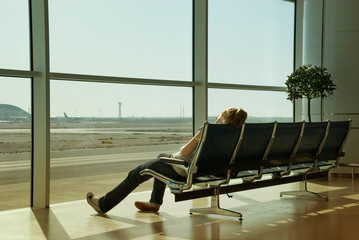
Jamie Zeitzer identified that if you were to put somebody in a room where a light would turn on at 4:00 AM and the person slept through it, that could adjust somebody’s biological timing. So that would cause them to adjust their jet lag within, let’s say, three days if they were going from Iceland to California.
He found that if you give a pulse of light every 10 seconds to a minute, then the person will actually adjust faster than to continuous light. He can cut the time it takes to adjust to jet lag down to about a third, which is great.
Who else can benefit from this? People that are doing shift work, people that do regular travel across time zones, children. There are a lot of reasons.
You could even think of an application on the weekends. If you’re young and social and you go out on Friday and Saturday night, Mondays tend to suck. You’ve actually gone through a bit of what’s called social jet lag. You’ve shifted your schedule and you feel terrible on Monday. So that that’s another application.

This company, LumosTech, has now taken his technology and they’ve turned it into a product, which is great (and Jamie has no financial connection to the company, but he is a scientific advisor). I’m all for that. To use the product, you wear a mask at night and in the app you say, “I live in San Francisco but I’m traveling to Paris.” It gives you a sequence about when to wear the mask. Then while you’re sleeping, the light flashes will pulse at the right time so that when you arrive in Paris or when you come home, you actually adjust faster. That’s the concept.
DrMR: So you would wear the mask for a few days ahead of time. And essentially a couple of hours before you’re going to wake up, roughly speaking, you’ll get these pulses of light that will start shifting your rhythm in that direction?
DP: That’s one idea, that you can pre-adjust. The other idea is that you would adjust faster than if you just did it when you were there. Pre-adjusting is actually a smart routine. Let’s say you were flying to Paris, but you had to get up when you arrived. You needed to present at 8:00 AM and be sharp. You might try to pre-adjust. So my mentor Jed Black was spending a week every month in Basel, Switzerland and then spending three weeks back at Stanford.
He was working with a pharmaceutical company. He would stay up much later here and go to bed much earlier when he was there. So he would minimize the window of how much needed to change. Then a couple of days before he left, he would be a little bit more extreme on both sides of that equation. And he said he figured out a pretty decent way for him to be functional in both locations with regular shift work essentially. So you can try to adjust ahead of time or you can just try to adjust faster once you arrive.
Sleep Hack to Recover from “Social Jet Lag”
DrMR: So, let’s say you normally try to go to bed at 10:00 AM, but over the weekend you went to bed at midnight or 1:00 AM for two nights. And you feel like you’re a little bit off kilter on Monday. How would you use this to readjust yourself?
DP: If you usually go to bed at 10:00 AM five days a week, and then on Friday and Saturday night you’re staying up until 1:00 AM, the timing of your biological rhythms is going to adjust. We call it delay, advance or delay. It’s a little confusing because delayed means that your timing is shifting rightward. I’m seeing a graph in my mind.
If you keep doing that, your body tries to make 1:00 AM feel like 10:00 PM for you. It’s trying to move in that direction. Because your rhythm is shifting, the way you usually feel at, say, 7:00 AM will move to around 9:00 or 10:00 AM. So it’s how you know when you would naturally feel like waking up. In this scenario, if you were to wear your mask, let’s say, on Sunday night, it would give you timed pulses of light probably at 4:00 AM and that would start to anchor your rhythm and start to advance it so that you would feel less affected by that social jet lag Monday (and also Tuesday, because it takes more than a day for you to adjust).
You might really feel like you’re hitting your stride mentally by Wednesday and then by Friday night you’re starting all over again. I used to feel this way all the time when I was younger and single and I would go out on Friday and Saturday night!
View Dr. Ruscio’s Additional Resources
DrMR: Is there a potential drawback of this too? Does it disrupt your sleep at all? It sounds like it starts to wake you up, so to speak, a little bit earlier, so that your body is more woken up when you’re actually going to get up. Is there any potential loss of quality sleep time as you’re making that shift?
DP: That’s a great question. Actually, it’s not about waking you up at 4:00 AM. It’s about giving you light into your central nervous system, into your brain, so that the circadian pacemaker starts to re-adjust. All that shifting that took place is wound back. But an important question comes up. Do people wake up to the pulses of light?
What they found in the lab is that most people can sleep through them, but that would depend on what’s called your arousal threshold. So some people are woken up very easily with very little input. Could you learn to sleep through those? Could you fall back asleep so that there’s essentially a de minimis effect on your sleep timing? That matters too. If you truncate your sleep duration by two hours or a few hours, that’s going to cause grogginess independent of your circadian timing.
So, it’s something that you might have to personally experiment with. But I think for some LumosTech is going to feel like a magical product.
DrMR: Gotcha. Yeah, I’m looking it up right now and it looks like it’s not yet for sale. They’re just doing pre-orders unless I missed something.
DP: Yeah, they’re doing pre-orders now. I think it’s closer than ever, because what I’m seeing on their website now looks like some pretty significant advancement.
DrMR: Cool. If I miss that, I just subscribed for a ping. Keep me posted if you hear them releasing because I’d be curious to give that a try.
DP: Me too. I’ve not tried it. I’d love to and I’ll probably order one when I can. But yes.
Episode Wrap-Up
DrMR: So where can people track you down on the internet?
DP: All of my work is posted at humanos.me. Human OS, like operating system. That’s a project that, as you know, Mike, I’ve been working on for a long time. It’s all based off of a behavior model that I developed: in order for people to adopt and sustain these healthy self-care practices long-term, they should know why they’re doing something, how to do it, if they’re doing it, and if it’s working. Really, those are four different buckets that independently contribute to somebody’s taking care of themselves. I just don’t think that self-care is given adequate attention in today’s world.
We have gotten into the bad habit of outsourcing our health to a healthcare practitioner. And don’t get me wrong, super-skilled clinicians like yourself are a part of that care team for you. But there’s a great saying, you can’t outsource your core competency.
And your core competency of taking care of yourself still resides largely in your hands, if you have any, let’s say, gut issues. I’ll mention that because obviously in the work that you do, it’s great to get an expert. But it’s not your responsibility, Mike, for your patients to go to bed on time, to eat well, to exercise, right? That’s our own responsibility, it’s my responsibility. So we’re trying to help empower people’s self-care efforts by pursuing what we call health mastery. We have a lifetime to benefit from it and a lifetime to try to learn.
A lot of people find that message really appealing. And they care. I’m not one who thinks that people don’t care. Certainly there are those people who act like it, but many, many people care. So we have a bunch of peer-reviewed health courses, how-to guides. So you use the tools in different ways over time, but it’s about making you smarter about things that can help you be smarter about yourself. We empower you to put that all into practice, so that you continually become better at the business of your health.
DrMR: You’re one of the first guys who I saw really trying to use the bio-tracking data, amongst other things, to help people have an improved awareness of what they were doing right, what they maybe were neglecting, and—if we could just pull their attention to those habits—could motivate them fairly easily to take action.

So I have to hand it to you in seeing that trend. And I would definitely recommend people check out Human OS, because you guys offer people a really deep breadth of services to take action. You not only help people with tracking, but also take action on what to do if you find something like a sleep disparity.
DP: Thanks, Mike. I appreciate that. There are so many different aspects of health that have a hype cycle to them. When first tracking came out, the world treated it like, “Oh, it’s gonna save us.” And there was pushback on that. I’ve always had a fairly measured enthusiasm about this data, because I think that they can provide a very valuable aspect of your health.
It’s like a dashboard on a car. That can be kind of boring, but it’s useful, right? If I can just check in and engage with my health in some ways, my low intensity activity and steps and my sleep time, I don’t need to know every single aspect of my sleep. I’m not trying to constantly diagnose a sleep issue. I’m trying to go to bed at the right time and wake up at the time.
There are some simple things that are really valuable if you just stay in check with them. That’s largely our view on these things. And a lot of the companies that make these hardware devices have consumer pressure to always have more and more features. It’s sort of sad and funny at the same time for me, because the truth is that they already provide the majority of the benefit.
I’ll be excited when we can see continuous glucose monitoring or other stuff that becomes more frictionless, but generally I prioritize what I care about. Does this help somebody do the right behavior? And sometimes I think we’re looking for the silver bullet, like, “Ah, here’s that thing that explains everything about why I am not as healthy as I’d like to be!” And we’re very much like, can we get people into a great daily pattern of living?
And there might be more nuance that you have to pursue with the clinician, etcetera. But that’s how we view the world. This is where we help. This is our lane.
DrMR: Yeah. I would simply state that as a responsible view on bio-tracking, rather than a heretical one. If I were to say it simply.
DrP: Yeah. It’s funny, there are always the first adopters. And those tend to be a little bit more extreme with stuff and a little bit more attracted to woo and testing out all sorts of crazy ideas. Some might stick. You might hear about a new kind of modality, tech device, whatever, from that person. But you also probably heard 30 that you’ll never hear of again. They’re about exposing you to something first.
I’m always, again, measuring by, “Okay, how does this help somebody, and is this really worth us focusing their attention on it?” And undoubtedly there will be things that come into existence that aren’t available now, that will be an efficiency measure. But I like the idea of bio-hacking. It’s your relationship with trying things to see if it works for you. Not doing the exotic–
DrMR: Just for the sake of the new bells and whistles.
DP: Exactly. Because it’s out now and it’s popular. And then you’re injecting yourself in the nasal cavity with stem cells that are lit up by red light. That could prove to be awesome for humanity. But I’m more about how we have to have this relationship with ourselves. That is setting goals, it’s trying things, being tapped into seeing if it works or not when using it. And it’s using objective data, but also really relying on subjective.
How do you feel? Do you actually feel better? Is this something that is aiding in your quality of life and your daily experience? So it’s a good balancing act. I think done right, bio-hacking could be a good new movement in a world where we need people to participate societally more.
DrMR: Yeah. That’s why I’m glad you’re doing the work that you’re doing. Dan, because you hold yourself to this high standard which we need. So thank you for that, and thank you for taking the time today to literally illuminate us! And keep me abreast of any new and exciting stuff on your end, please.
DP: Yeah. I will, and thanks for all the great work you do, Mike. I always learn a lot from you and I appreciate you having me on the show.
DrMR: Been a pleasure. Thanks again, buddy.
DP: You too. Take care.



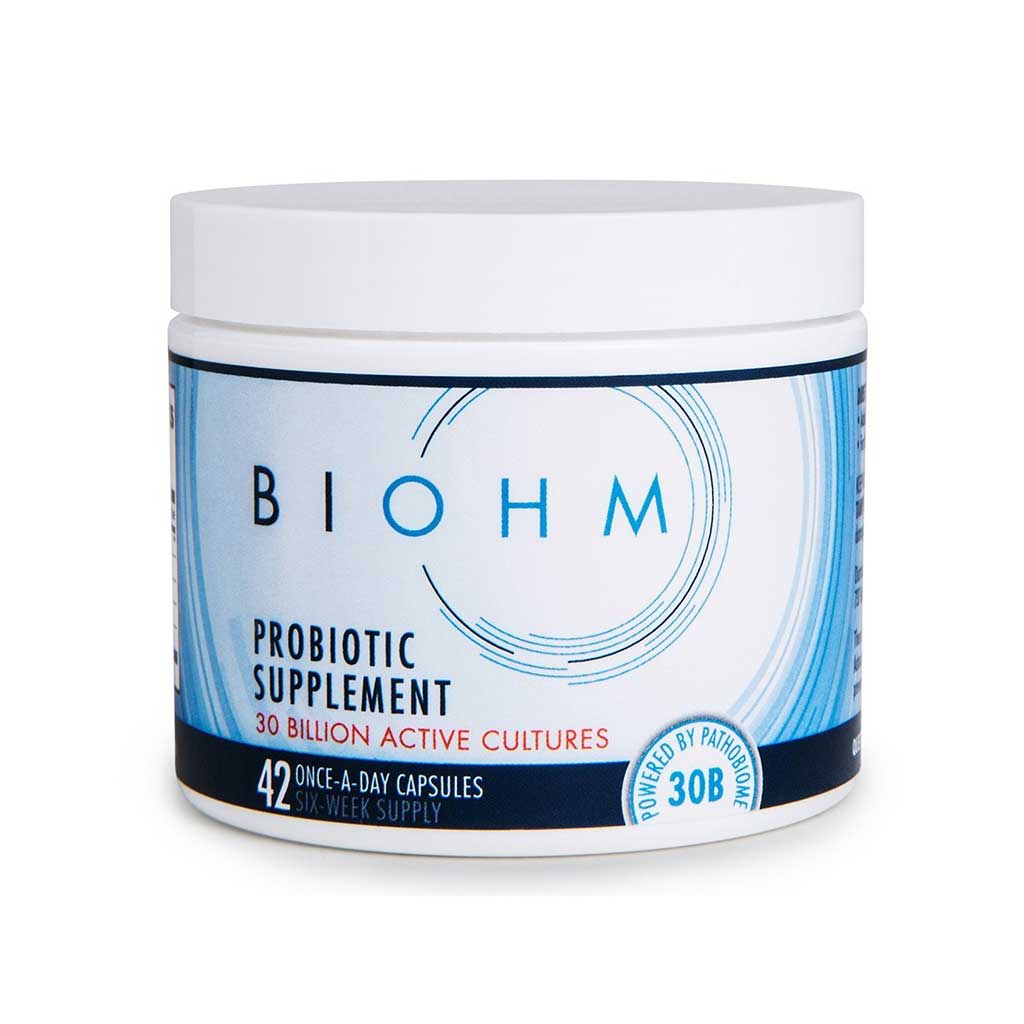
Discussion
I care about answering your questions and sharing my knowledge with you. Leave a comment or connect with me on social media asking any health question you may have and I just might incorporate it into our next listener questions podcast episode just for you!